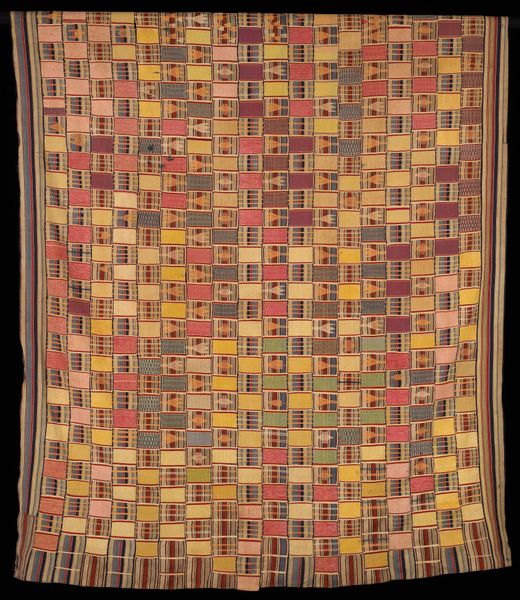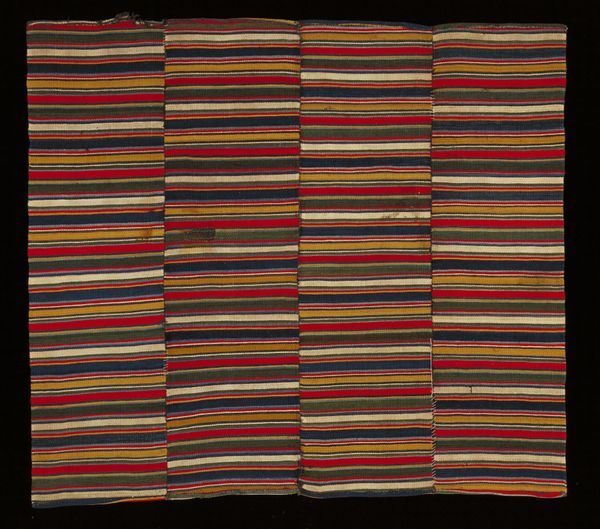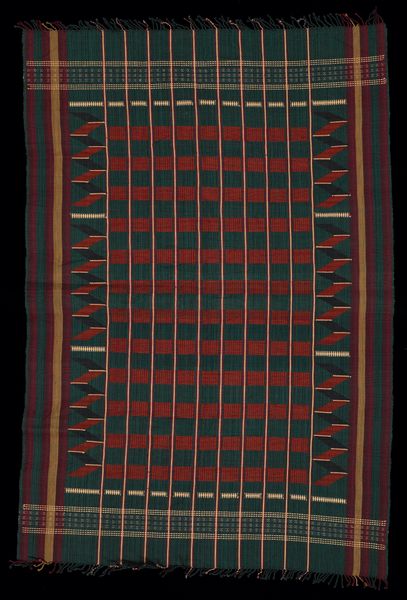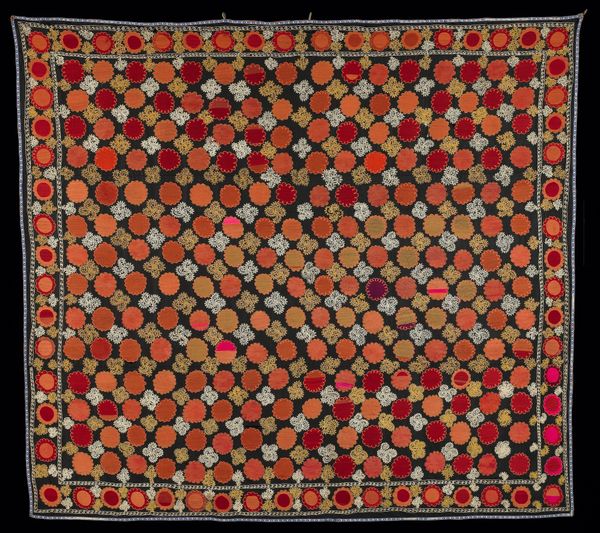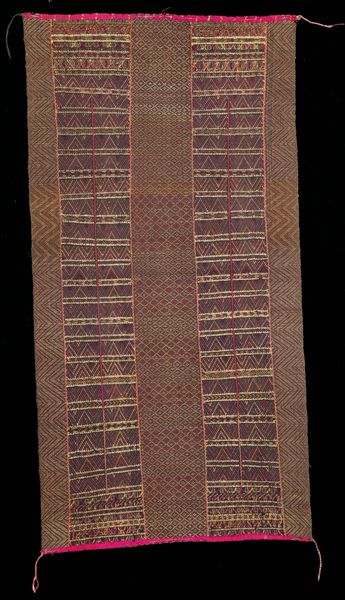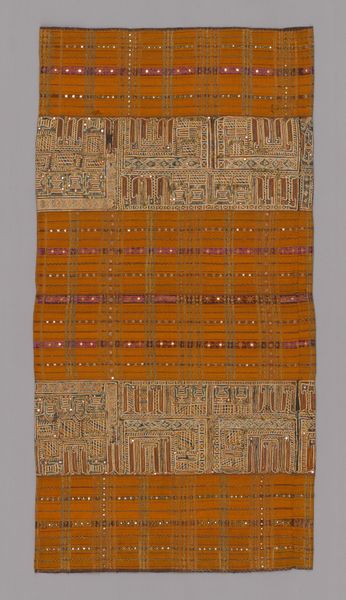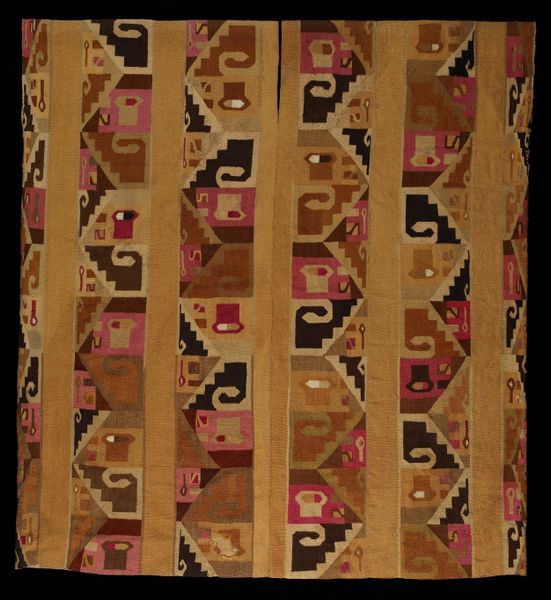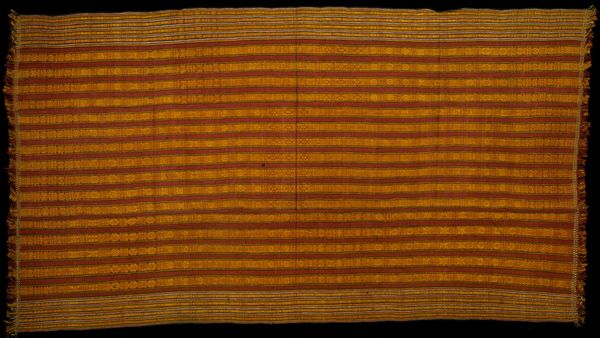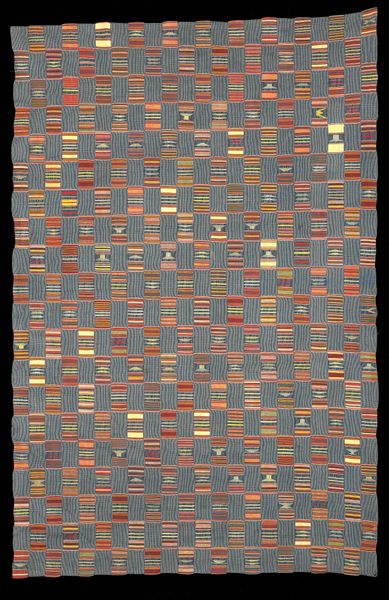
weaving, textile, cotton
#
african-art
#
loose pattern
#
weaving
#
textile
#
geometric pattern
#
abstract pattern
#
organic pattern
#
geometric
#
repetition of pattern
#
vertical pattern
#
intricate pattern
#
pattern repetition
#
cotton
#
layered pattern
#
combined pattern
Dimensions: 59 1/4 x 97 in. (150.5 x 246.38 cm)
Copyright: Public Domain
Editor: Here we have a “Man’s cloth,” woven around 1940 by an Ewe artist. It’s comprised of cotton textile, and is currently held in the Minneapolis Institute of Art. I find the intricate layering of patterns to be quite mesmerizing. What do you see in this piece? Curator: This textile presents a compelling interplay of line, color, and form. Observe the verticality of the dominant stripes juxtaposed against the modular blocks of supplementary weft patterns. Do you perceive a tension arising from this arrangement? Editor: I think so! There's a defined structure because of the stripes, but the eye also bounces between the little colorful rectangles, breaking up the uniformity. Curator: Precisely. The chromatic relationships within the blocks, exhibiting warm hues such as ochre and sienna against cooler indigos, introduce further visual complexity. The varied widths and densities of the linear elements also warrant attention. Editor: Are you saying the specific arrangement of lines is important, rather than the fact that there *are* lines? Curator: Absolutely. It is the syntax of these formal elements, the calculated deployment of line, color, and pattern, that constructs the artwork's aesthetic impact. The negotiation between order and variation is central. What is your perspective? Editor: I see the complexity and tension you point out. I hadn't considered that the combination of all of these elements creates the feeling that I initially interpreted as being 'mesmerizing'. Curator: A useful observation! Indeed, by analyzing the visual structure and internal relationships, we can come to a fuller understanding. Editor: Thanks, I am already viewing the artwork through a new lens!
Comments
minneapolisinstituteofart about 2 years ago
⋮
Both Ewe and Asante weavers create unusual, dynamic cloths by alternating two or more stripe patterns. The Asante name for this style is Mmbam (mixed cloth); the Ewe refer to it as Sasa. The strips are often dramatically different from one another, but the pattern blocks usually share a similar color palette and design features which unify the disparate elements. The use of multiple stripe patterns reflects a conscious design choice and is not a way to use up odds and ends of leftover strips or to recycle older cloths. The use of two-color plied weft threads and figurative motifs identifies this particular piece as the creation of an Ewe weaver. In the lower right hand corner is an area patched with a third stripe pattern; this may be a repair to the garment or it may make up for a shortage of that particular stripe pattern. Almost every cloth in this installation has a patch or a miscalculation of some sort; these aberrations are not considered flaws nor do they diminish the value of the cloth.
Join the conversation
Join millions of artists and users on Artera today and experience the ultimate creative platform.

